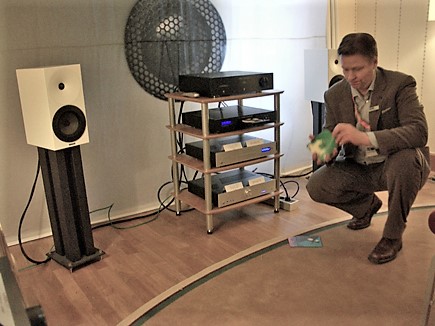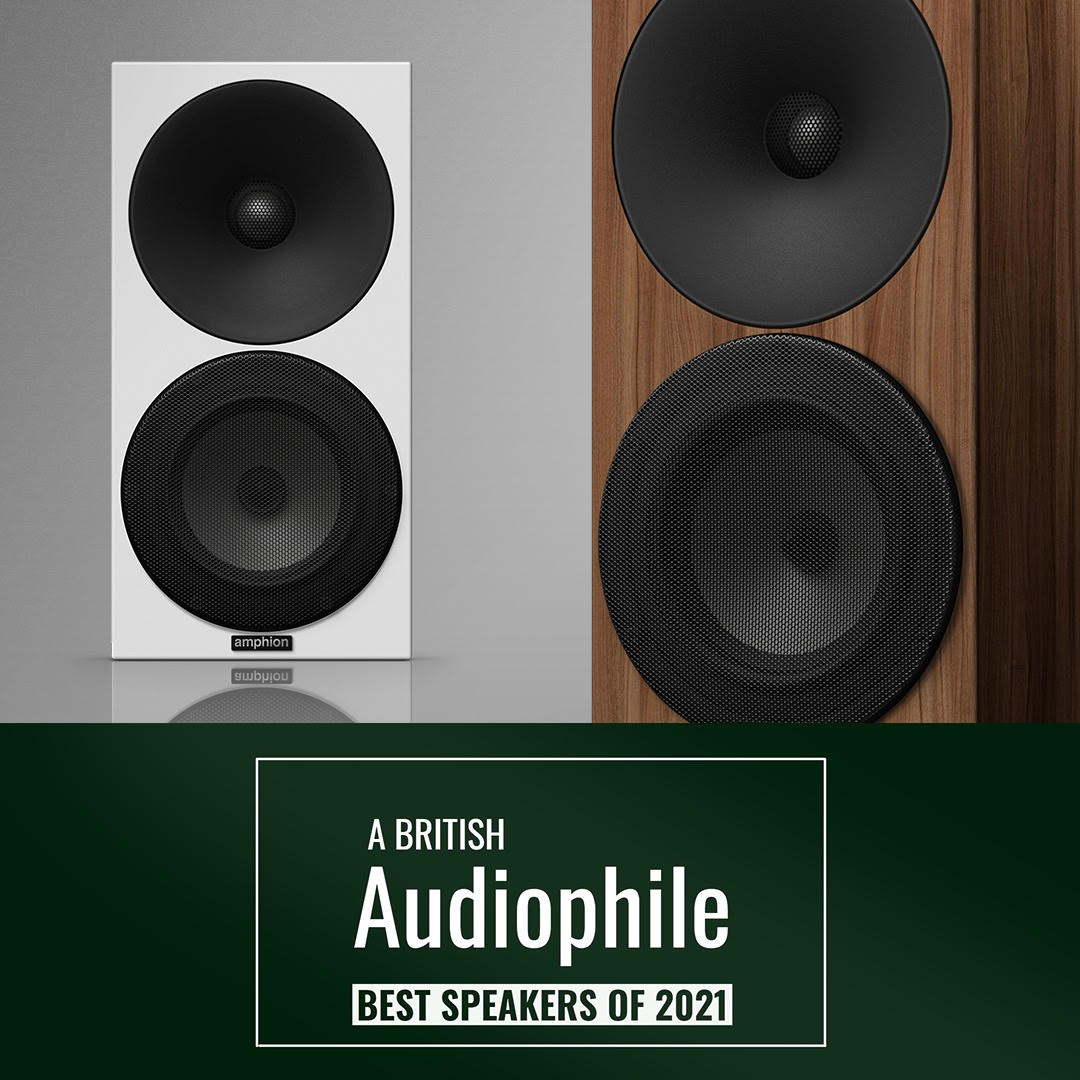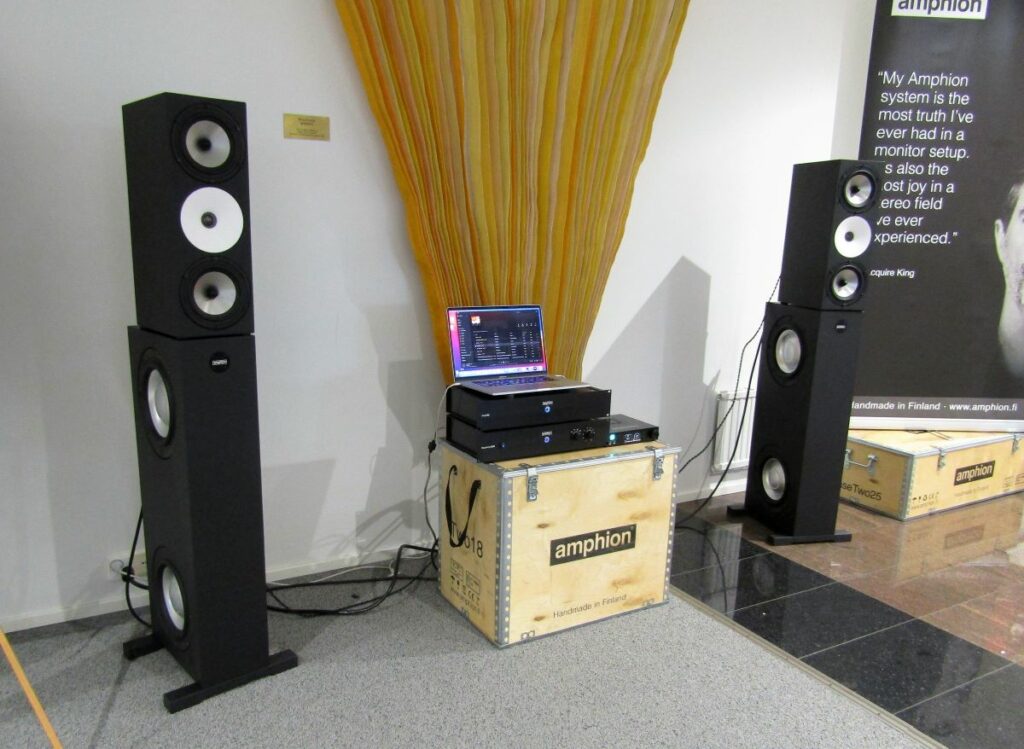– Now that I think of it, there’s been clearly three episodes in the story of Amphion, each lasting about 7 years, beginning from the late 1990, 1998 in fact, when I, at the age of 32, joined two partners to set up a loudspeaker company based on a solid technical foundation; … then when I took the whole responsibility for running the company around 2007, and finally 2014 when we transformed the company from a company relying solely on domestic speakers to a company with two legs, one in home audio, the other in pro-audio business. But let’s go back to the very beginning …
PART I: EARLY YEARS
– As a young man I worked as a sales representative for a Finnish consulting company in Hong Kong. The main customers were Finnish export companies, and one of the clients was Tulikivi, the manufacturer of fireplaces in Joensuu. Via Tulikivi I came in contact with Active Stone, who made loudspeakers out of soapstone under Avalanche brand. I begun to investigate markets to see if there were any potential demand for Avalanche products in Hong Kong.
– Unfortunately, due to sudden currency changes, Active Stone got into financial difficulties and had to stop. But I had become a friend with Managing Director Petteri Koljonen and we kept in touch. A few years later Petteri met a loudspeaker designer Antti Louhivaara, whose own company also was in financial troubles. Their ideas regarding speaker design coincided and they started discussing possibly co-establishing a company, and contacted me for arranging initial capital. My question to them was how much money was needed, and soon Amphion was established. Originally the plan was that I would only invest the capital, and would not be involved in running the business on a daily basis. That changed when the Danish-Swedish company I was working for, decided to focus their activities on their core markets and the Far-Eastern branch was closed.
– In order to fully allocate my time to Amphion our family moved back from Malaysia to Finland. Amphion’s head office and assembly line was set up in Suutarila, Helsinki. Since the children were small, we chose to live close to my grandparents in Kuopio, 400 km away from Helsinki, meaning that first couple of years I got aboard a 5 am train to Helsinki on Monday and returned home Friday night. We found a cabinet manufacturer, who was located 45 km from Kuopio, which became very convenient when the company was later relocated in Kuopio.
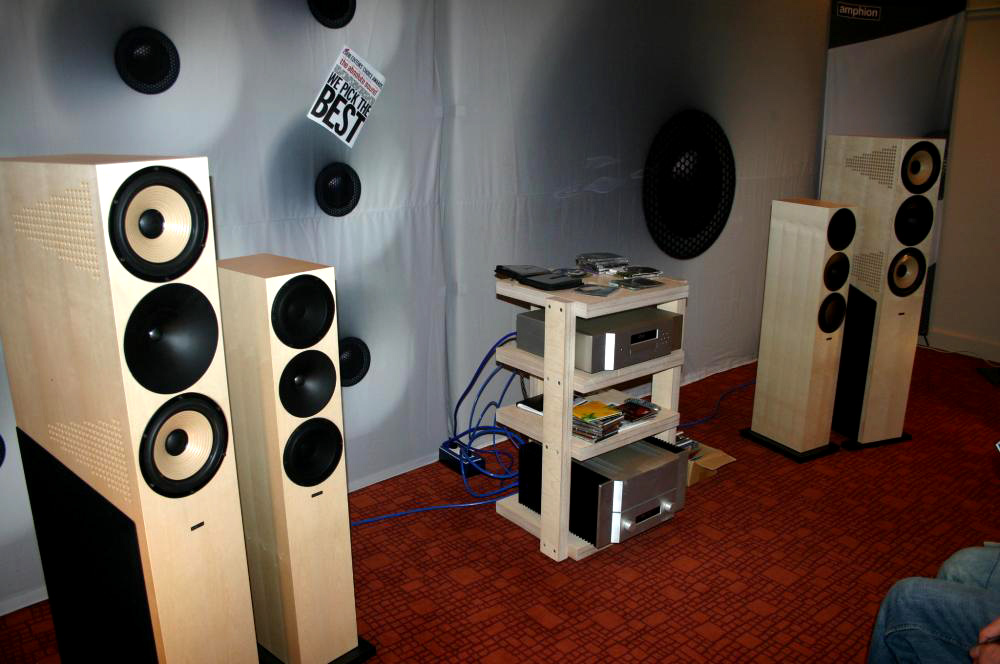
– The first Amphion loudspeaker model was a two-way standmount Argon with a 6.5″ woofer. It already possessed many of the hallmark technical features, that later came to characterize Amphion speakers. It was followed by a smaller bookshelf speaker Helium, and a bit later by a floorstander Xenon. By keeping costs under control, and also thanks to Petteri´s good contacts with the Finnish Hi-Fi dealers, Hifistudio in particular, Amphion got off the ground, slowly but surely. Due to limited domestic market, exporting was our aim right from the beginning. Around 2000, we exhibited Argons and Xenons at the Frankfurt Highend Show, and being directional speakers, … not that common at the time …, they performed well, and got good reception.
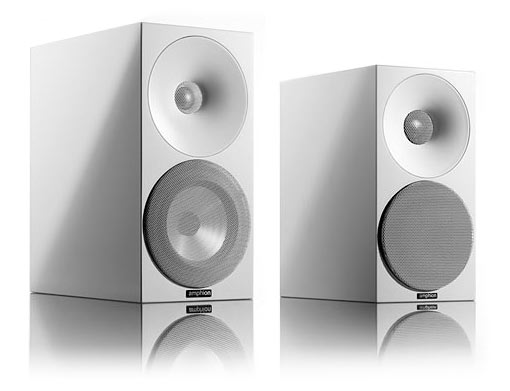
My early years
– My personal history with audio and hi-fi goes much further back though. As so many people in this branch, I’ve been interested in audio almost as far as I can remember. At 14, with the money my father gave me, I bought my first Hi-Fi system from a quality audio/music shop. In those days surprisingly high quality hi-fi gear was being sold in a relative small country town like Kuopio, where I grew up, by shops like Musiikki Kärki and Audio Savo.
– The times were different back then. As I see it, sales personnel better understood customers and took their personal experiences into account. Naturally there was also less competition over people´s money, and hi-fi was higher on the shopping list as it is today. In my mind, retailers should focus on creating unforgettable experiences. I will never forget the day, when this shy and quiet 16 year old guy visited Kultakorva, a dealer shop in Kallio, Helsinki. I could not afford anything in the shop but still they sat me down on a comfortable bench and let me listen to one of my all time favourite artists, namely Ismo Alanko (Sielun Veljet) whose 45 rpm new maxi single was just released. The moment the song “Haista vittu” started pouring from Infinity IRS Beta loudspeakers was really an ear-opening and life-changing event to me.
– After a long period of background study in the realm of my newly found passion of audio, my first system consisted of Luxman PD-370 vacuum LP player, the one that sucks the disc tight onto the platter, Dynavector MC-cartridge, all Luxman amplification. My father’s old Tandberg speakers stayed in the system for a long time, until they were finally replaced by Amphions. This system is still in use after 40 years.
– There are two odd things about me that have helped me in my 40 years of listening to music and developing loudspeakers. First, when it comes sound, I’ve seem to have developed a sonic memory that allows me to remember exactly how something sounded at a certain place at a certain moment, so that I can compare it to the current one, and use the information later. The other weird thing about me is that I’ve always been especially sensitive to sound’s energy and emotion. How does it manifest itself? Well, final voicing is a stage where loudspeakers gets it´s final form. Working with tiny difference, knowing for example which resistor value to choose, can be a tough task. In our case it’s always been easy to know when the product is ready: we stop tweaking when the hairs on my arms stand up. And it appears that what works for my arms, causes similar reactions in others!
Hifi reviewing and advertisement
– Hi-fi is a field where customer have difficulties in choosing between products, and where advertisement and sales often correlate. Luckily our brand has always gathered positive comments and attitude, and our products have been appearing in a favorable light in show reports, etc. so we have managed to get by with reasonable advertising expenditure.
– Also, earlier those people who wrote the reviews did not sell the ads. Now that’s changed, and you never know who’s behind what, and who’s influencing whom. In my mind enthusiasts and audiophiles should always trust their own ears instead of looking for youtube reviewers or writers opinions on a certain product.
– Personal experience and evaluation through a reseller in a proper environment should be a pre-requisite for judging the speaker’s sound quality. Although I am a bit old-fashioned in this regard, there’s no denying that youtube channels have made a big difference in past five years and enabled people to find products that they would have never otherwise known. Youtube may have exposed higher quality audio to a large viewership, as they are easy to follow and can be found easily. In the Asian markets, audiophiles still prefer to read magazines. In general the situation has become more diverse, the hi-fi community, if there ever was one, is now more segmented.
– Sure, over the years we’ve got our share of malicious reviews. Tastes differ, of course, so this will always be the case. Judging an unknown product is not that simple. What if a speaker happens to reveal a problem elsewhere in the signal chain that the reviewer has not observed before? Is it the speaker then that is blamed or something else? Luckily to us, even more often what has happened, is that the critic, in the course of writing the review, has become aware of the qualities of the Amphion sound, and in so doing has gone from cold analytical writing into enjoying the music eyes closed.
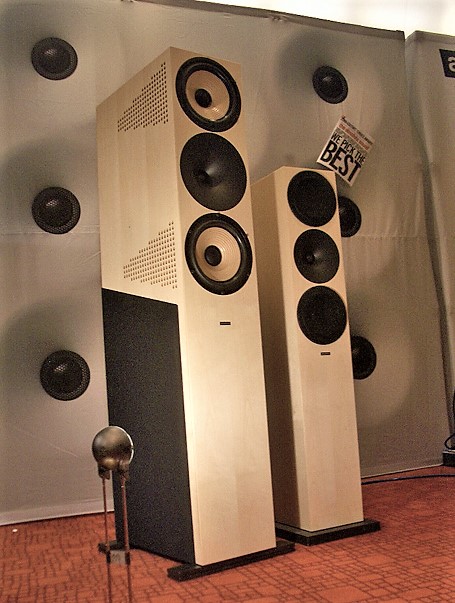
Technical background of Amphion speakers
– The AES papers by the Finnish loudspeaker designer gurus A. Weckström, and J. Salmi, whose seminal work had a great impact on the thinking of all Finnish loudspeaker manufacturers, from Chorus to Genelec etc., and contributed to the fact that speaker directivity and waveguides were part of the formula for many Finnish loudspeakers right from the beginning, Amphion included. All Amphion loudspeakers have always carried waveguides. The approach was finetuned over the years and increasing focus was placed on creating wide, even dispersion, instead of increased directivity, which is the traditional Finnish speaker making objective.
– Since speakers are often placed in the focal point of the room, their looks is important. The timeless, restrained design of Amphion loudspeakers was created by industrial designer Risto Pentikäinen. He invented our design language, the concept that has proven to be very functional, and which we did not see need to change. There are other loudspeakers nowadays on the market that bear resemblance to Amphion´s but as Martin Colloms once put it: Amphion was the one that set the trend, and put the waveguide designs on the map. The basic design, both technical as well as industrial, has served the purpose well ever since, and is now in its sixth generation … Of course, it has not just been dancing on roses, with all sorts of challenges related to manufacturing, materials, tolerances and so on, but we’ve always ended up in doing what we’ve felt is good.

PART II: ROUTES PARTED
– As said, as of 2007 or so, the three founders of the company were separated, and I took the whole responsibility for running the Amphion business. And I did it by reconsidering the role music plays in people’s life. What I mean is that, as modern life gets increasingly busy and stressful, music offers one of the best paths to positive experiences, emotions and stress-relief. Against this background, I find the current trend kind of depressing: music has become 24/7 sonic wallpaper. Especially when the sound is not produced correctly, the sonic information, disguised as music, turns into noise pollution. Instead of healing, it harms us and causes further stress.
– On the other hand, listening and finding high resolution quality music has never been easier. As everything has become available with the click of a mouse, the internet savvy customers tend to forget that a competent hi-fi dealer still is a true asset to a customer. Even if specialty shops and hi-fi dealers are no more the only guards of information, they remain the only place, where one can evaluate different products side by side. As the supply side is much richer nowadays, and relevant information more widely available, customers are in a better position to extend their knowledge beyond what is available in the shops.
– But I’m first to admit that it is truly hard nowadays to predispose people to better sound quality. It is hard to persuade a busy modern man to relax and sit down for 15 minutes and listen to a high quality sound system with open mind. The audio industry is not only competing for people’s money but most importantly for their time also. Audio manufacturers are generally small companies, and there’s no way we can compete with car or boat industries or even with bed manufacturers. The pleasure and status people get from a new car or boat or bed is somehow more obvious.
– A good sound, on the other hand, it’s abstract and more difficult to define. And sound is just one part of the equation. Ease of use comes often first, and since many customers feel they cannot tell the difference in sound quality anyway, they emphasize convenience. In this respect, sound is not that different from cooking. Most people choose an electric or gas grill because they feel charcoal, which produces clearly better results, is inconvenient to use. Yet those who have both after a while end up in using only the charcoal grill. Same applies to sound, or coffee, or bed. Our body can easily tell the difference. It is only if we lay open to better sound that we can realize its betterness.
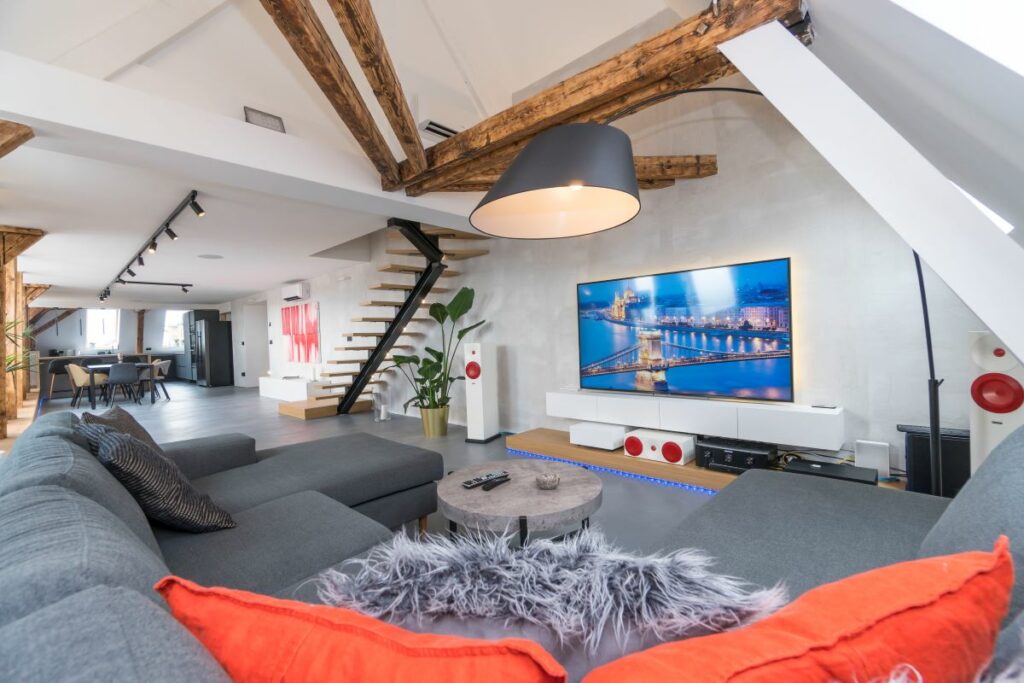
Amphion customers
– Even though majority of Amphion products are sold to professionals and audiophiles, it is the so called normal people that are close to my heart. For them, 2000 euros is just enough to transform how their home would sound, and this would benefit them not just with music but movies as well. We have demoed with for example Sonos Amp or Harman Kardon Citation, and Amphion Argon1 loudspeaker, with the result that even the hi-fi show visitors have been surprised. 99% of people would never need anything else. What impresses me is that just about everybody is moved by the sound of such a less expensive system.
– The fact is that sound is not very high in people’s preference order. They are steered towards buying multichannel home theater systems or soundbars or other such devices which look great on paper, but which are sonically radically inferior to a good stereo system with quality loudspeakers. Popular music related reality and other shows on TV seem to have increased the demand for better speakers. Amphion has a good brand reputation among this clientele, i.e. people who value quality in all of their purchases, but are not necessarily experts or aficionados in this field. We export currently 90-95% of our production, and will thus focus next a bit more on the domestic market.
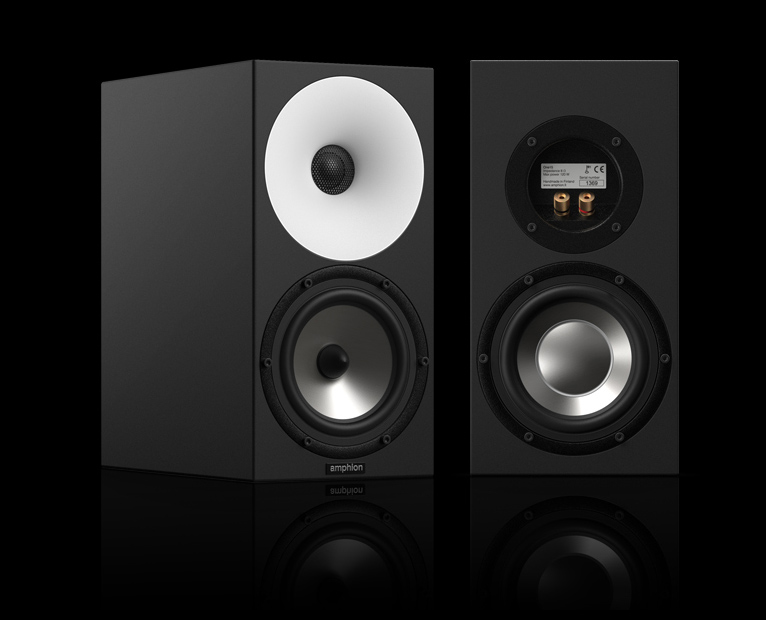
Passive vs active DSP speakers
-Manufacturers of active speakers have done a great job in marketing their products. There are numerous omni-potent active loudspeakers on the market nowadays. The idea of simplicity – being able to create a complete system just by adding a streamer – is appealing to many customers. This aim for simplicity is a clear counter-force to the traditional high-end market, which has lost its way somewhat. Something is not right if highend speakers with 4 moving parts start costing more than a nice car. But many high-end dealers are more motivated by money, than creating great sounding systems to their customers. Old school dealers, who care about sound, often find it increasingly hard to compete in the modern sales environment. Active DSP speakers have found their way to the heart of many audiophiles, because they find the idea of a perfect sound that can be obtained by pushing a single button interesting. I personally do not understand why DSP should be part of the home speaker design, as we believe that better results can be achieved by keeping the DSP in one place i.e. in the monitor controller, which is exactly what is happening now in the pro world. We will see this happening more and more in the home audio as well, as combining software and hardware in one place brings benefits that the DSP speaker makers cannot match. A speaker is something that must last for long time independently of the evolution of DSP chips etc. Also, a way too often DSP is used as a cost saving tool for cutting cornes on acoustic design etc.
– A thing that is obtained by leaving the DSP out of the speaker is certain: the true life span is longer. I sleep better when I can tell to our customers that Amphion speakers are free of quickly aging digital components, and therefore the speakers will not become out-dated overnight with the arrival of next generation of better performing DSP chips.
– Note that DSP engineering is very different from acoustical design, which in my mind should be at the core of all loudspeaker design. As speaker companies are relatively small it is not realistic to expect that they are masters of all trades. This is the reason we at Amphion are focusing on making the most resolving, transparent, phase coherent loudspeakers, which thanks to the point-source time operational principle, and wide even dispersion, works in all rooms in an acoustically predictable manner. Modern DSP works well for frequency adjustments, and the results can be good as long as one does not need to touch other, more complex variables such as the phase. For the best results, the corrections should be kept at minimum and basic things, like speaker placement, cannot be ignored. There are aspects of sound with which standard DSP based applications typically struggle. One such crucial things is dynamics that often gets killed in active DSP speakers, when compared to properly executed passive speakers. When used properly, and sticking to its strengths, DSP can be a useful tool when the focus is on the frequency response, and especially applied to the frequency range where the room problems are most prominent i.e. under 350 Hz or so.
PART III: COMBINING HOME AND PRO
– The pro-world wasn’t entirely unexplored land to us prior to 2015 Winter NAMM, when we officially launched our first professional products in Anaheim. For example, some recording studios had been using our Amphion Argons earlier on, … but nonetheless, the decision to venture into the pro world happened by chance.
– One day in the mid-2010s, I came home tired, sat on the couch and opened the TV. The plan was to watch a B-Class movie, but the channel was wrong. No matter, I got interested in the program showed because it sounded so good even through the TV speakers. It was a documentary titled Mikrofon Mannen (microphone man) and produced by the Finnish Broadcasting company (Svenska) YLE. It was about a Finnish microphone expert Martin Kantola. At that point Martin was known best for developing signature microphones eg. for Bruce Swedien, who’s responsible for recording not only the world´s best selling album, Michael Jackson’s Thriller, but also some of the best sounding ones from Count Basie to Mick Jagger and so on.
– I instantly decided that I had to contact this gentleman, but found nothing on internet. So I left a phone message, but got no reply. Then I finally found Martin’s phone number, gave him a ring and arranged an appointment. When the day came, I took a pair of our Ions and Argons with me, and set off … Martin brought some Bruce’s old recordings, and through his Harrison mixing table we were listening and listening, … the Ion sounded fantastic! Being a microphone wizard Martin naturally had experience of transducers too, so we ended up doing a special pro-version of the Ion, which he carried in a suitcase to Bruce Swedien’s studio.
– Upon getting back to Finland Martin told me what happened and how some established engineers had expressed interest in the speakers. That marked the beginning for serious development work. It took two years before we were ready with the first series of pro-speakers, and this little Ion shaped prototype became later One12, our smallest pro monitor.
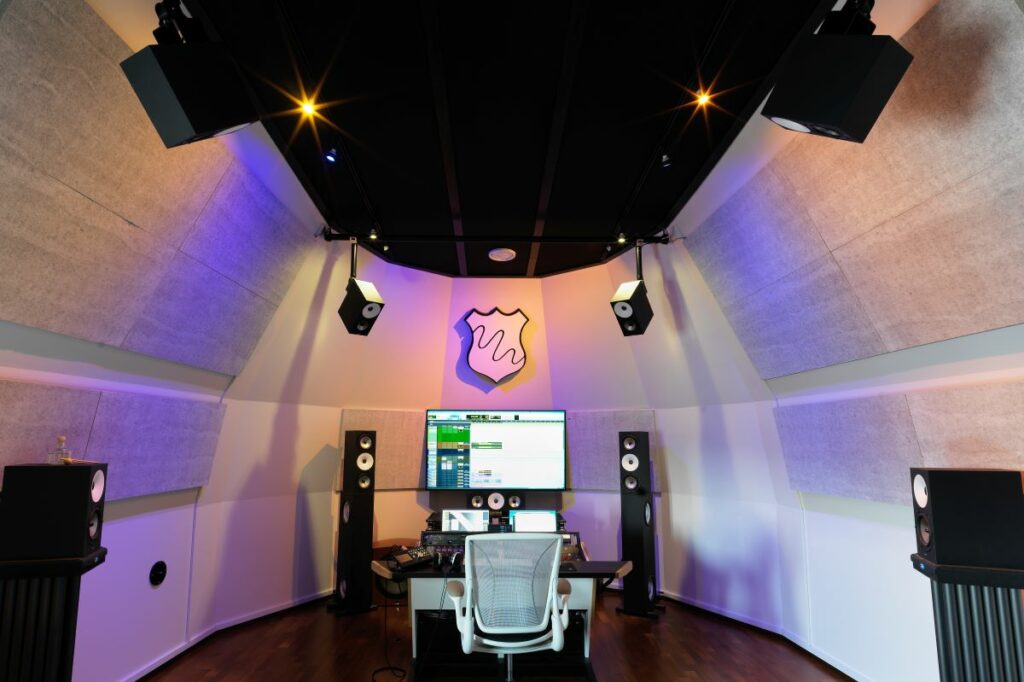
– It was heartwarming to see how the pro-people were willing to help us in the development phase by giving us feedback. I travelled with the first models, the Two15, and the One12, to collect experience from different studios, such as Bernie Grundman Mastering studio, and Ric Rubin’s Shangri-La Studios. That feedback was crucial for the iterative development process, and to ensure that the product, while offering something new, was not totally dissimilar to what those people were used to. On the hi-fi side, opinions vary more, but for the pro-side the premise was to make a tool that suits a modern studio and playback environment. We were very fortunate that the Finnish recording studios, and engineers like Henkka Niemistö, were comfortable to work with prototypes; their comments gave us a clear vision of the future.
– In our quest to develop a modern near-field monitor, the first thing was to remove the bass-reflex port, and replace them with passive radiators. In addition to benefits in the low frequencies, the mid-range clarity as also improved. When developing something one must keep the goal clearly in sight, which naturally lead to some minor sonic differences between the pro and home products. In home audio, sonic features are always a little beautified, pro speakers tend to sound more neutral and impartial. Also the listening distances and local acoustics are typically different, which must be kept in mind. Yet there are no real reason why pro-speakers could not be used at home, and recently that has become more popular.
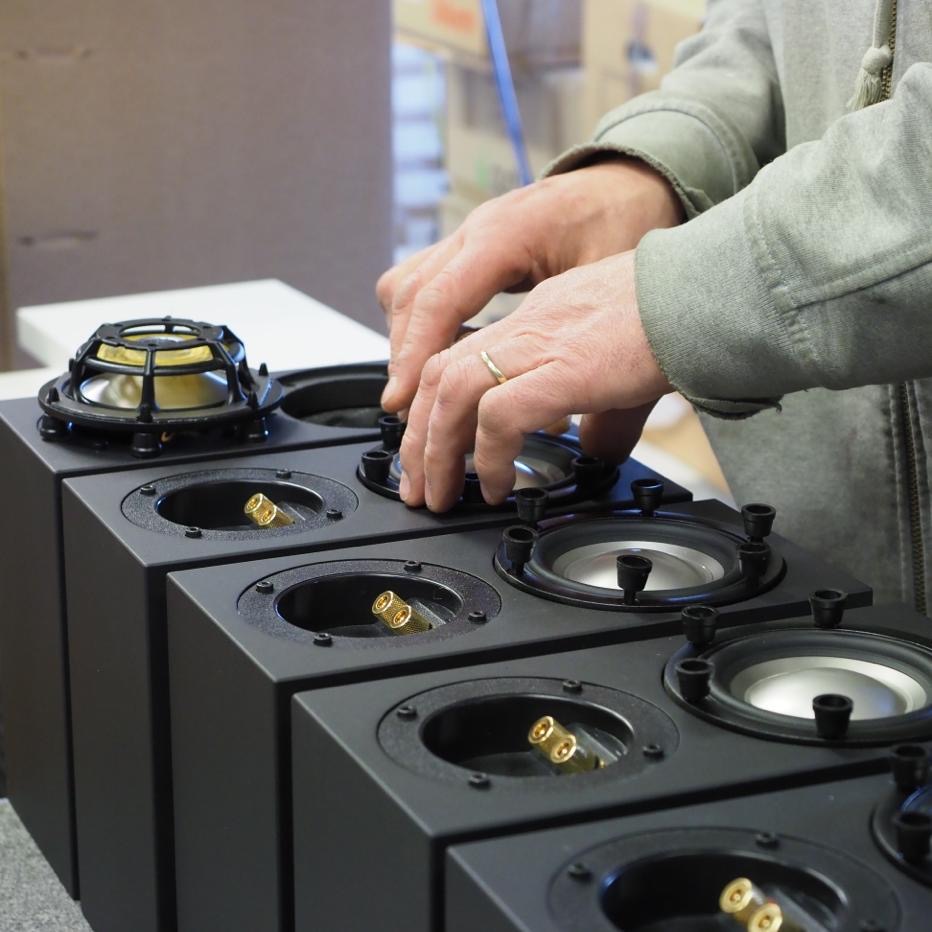
– Has the recent success of our pro-audio loudspeakers increased the demand for our home audio speakers? It has surely raised awareness, which generally shows up in sales figures also. It feels that even among the hi-fi hobbyists, whose world tends to be quite black and white, I’d say Amphion now is more acceptable, and as a brand is seen in a more favorable light than 10 years ago. Surely we still occasionally hear about using metal domes, especially from those who have not listened to Amphion speakers during the past 15 years. But since a growing amount of world’s best selling music is realized by using Amphion loudspeakers, the mood has generally changed.
– Hi-fi marketing departments have historically liked to add pro-credibility and related images to their products, be it fake or real. KEF LS10 was launched with studio images, Abbey Road Studio played a big part of Bowers & Wilkinsin marketing, PMC has a strong professional tinge, as does Genelec, ATC, et cetera et cetera. In fact, it is the pro-audio companies that have traditionally extended their business to the field of home audio, and not the other way round. In this respect, Amphion is quite a rare company proceeding against the stream, from home to studio.
– As I said earlier, our philosophy of making loudspeakers has always been that we’re not satisfied until the listener forgets the gear and focuses only on the music. And here the goal is always to produce the sound that was present during the mastering process, nothing added, nothing removed.
– The only presumption, which has truly changed from the early 1980s, when digital technology had not matured yet, is that back then loudspeakers often exhibited certain warmth around the 80 to 300 Hz range. The ear being conservative, a new sound is always perceived as wrong, for example when a passive radiator replaces a bass-reflex port. So when the 100 to 300Hz boost is removed, the first impression is that the tone of the speaker is a little pale, before the ear gets used to it. As the digital has matured and the worst days of compression are over, the average sound quality has become better, dynamics returned etc. Today’s DACs are great almost independently of the price, meaning that the speaker manufacturer can afford to be more honest with the sound of its speaker than ever before, and there is less need for compensating for the problems in the recordings. Moreover, the basic tonal balance of modern speakers have converged, and one can focus on others sonic characteristics such as transparency and imaging.
– True that financially it may pay to make the speaker sound warmer and sweeter, but at Amphion we’ve always preferred a transparent and open sound. We still do so, despite the fact that it can be challenging for people who haven’t heard such neutral speakers before. Lot of consumer grade systems are bass heavy, so introducing people to our type of clear and open sound can be a challenging educational path. This is the reason why we have two product ranges of home speakers: Heliums which are slightly forgiving, and Argons, which are more true to the source.
– Increasing brand awareness? Selling hi-fi products has traditionally been marketing intensive. Because customers are not always experts in evaluating small sonic differences, marketing has always played a big part. As I said earlier, the positive image and signal coming from the pro-world has increased Amphion’s attraction even among audiophiles. The growth in pro has been organic, and has taken place for example through various discussion forums worldwide, first and foremost via Gearspace.com (see their High end nearfield test thread).
The Nearfield test thread was started by a sound engineer in Norway, who was looking for near-field and midfield monitors for his studio upgrade. People liked how he wrote and quickly he got lot of followers. When someone suggested that he tried Amphions, I shipped a pair of Two15s to him. He liked it and awareness increased. In August 2014 an Amphion specific thread – Amphions.. beautiful – was commenced. Till today it has almost 1.5 million views, and it is the most popular conversation thread of the high end forum ever!
– The discussion forum generated larger interest, and we started shipping demo speakers for people to test. Gradually the word spread and the dealers got also interested to carry Amphion. And we have one advantage. With the exception of the most popular one, ie. Yamaha NS-10, the studio loudspeakers on the market are active speakers whereas our studio speakers are passive. When we started to offer our passive speakers for the studios, naturally we needed to offer the whole package including amplifiers and cables. So I had to go through all the amplifier modules available in order to find a matching amplifier. And I did. Later I found that the particular company had used Amphion hi-fi speakers in their development work, so it was no accident that their amplifier worked beautifully with our speakers.
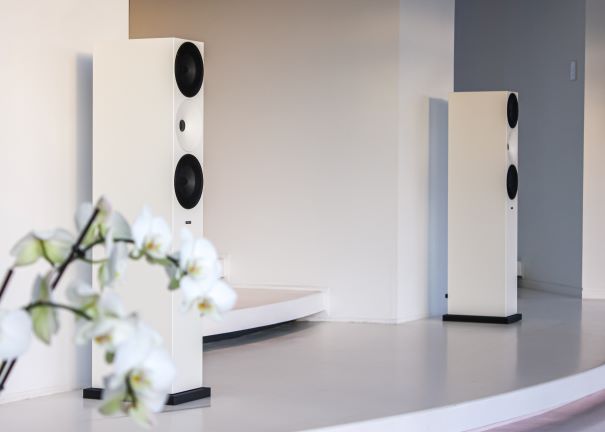
PART 4: THE FUTURE OF HI-FI
– For a music loving person, the current situation may be better than ever before. Streaming has provided access to the world’s all music and even the technical quality has improved radically as service providers keep bringing CD quality and hires-levels available to listeners. Also, in addition to stereo, the audience can now enjoy immersive versions of their favourite songs, ever since Dolby Atmos has become part of the music scene after Apple’s announcement that it will support the format.
– Ease of use, not the ultimate sound quality, has always appealed to the majority of consumers, and I see no change in that regard, but there are many ways for the die hard music aficionados to enjoy sweet high-quality sounds: I’m referring especially to object-based, immersive systems that enable streaming music up to its mastering quality. In general I think the sound quality is indeed improving, eg. in terms of dynamics. But independently of how people like to enjoy their music, it’s always the experience that matters most, … the basic premises of sound reproduction have not changed, and as I see it, the current trend is to get rid of devices, and focus on the experience itself. And that’s good.
– If there’s a thing that the hi-fi camp should learn from the pro-sound world, it is that things should always be viewed with healthy skepticism. Prejudices do exist in pro-audio too, but on average I’d say pro-people are more willing to accept new technical solutions as long as they can confirm the results with their own ears. Hi-fi hobbyists too often dig into their own pit, which will prevent them from discovering new solutions they might even like. Exploring fresh opportunities with an open mind, and questioning one’s own opinions, could open up interesting unknown paths to the secrets of sound. Another difference is that professionals approach new things more through their personal experience, whereas audiophiles tend to lean more on opinions of other audiophiles. For example, a professional will never ask for existing reviews or tests when he or she takes a certain product for a test, whereas that happens quite often in hi-fi. This insecurity in evaluating a product’s performance by trusting one’s own judgement makes hi-fi customers a good target for a wide range of promotional activities.
– Technically, the biggest single difference between home and professional audio is, funny as it may sound, understanding the importance of the room to the final sound. Professionals often spend a significant amount of money and time on improving room acoustics. In home audio, it’s still rather common, for example, that too big a loudspeaker is sold to too small a listening room. I vividly remember a comment by a hi-fi dealer who wanted to sell a large expensive floorstanders to be placed in an unsuitably small room: “If you buy that speaker, we will make sure it will work for you”. I thought to myself: how on earth are you going to do that … by changing the laws of physics?
– The more one is able to hear different types of hardware, the more likely it is that he or she will find a system that is right for the intended purpose. The more experienced the customer is, the easier it gets to assess whether the asking price for a product is relevant to its technical merits or aesthetic value. In hi-fi it often seems that the higher the price category, the freer the manufacturer is in setting the price, which of course is also of interest to snake oil traders.
– Just checked Wikipedia, and according to it “High-end audio is a class of consumer home audio equipment marketed to audiophiles on the basis of high price” first and a few other things second. It’s pity that the most significant merit of several high end products seems to be how high the manufacturer has dared to set the price, not how it sounds.
– An expensive, elegantly designed chair can be beautiful to look at and touch. It will not, unfortunately, deliver anything useful, unless it’s not good to sit in. It’s the same kind of thinking I’d recommend for makers of high-end loudspeakers. The acoustic design and other essential features need to be properly thought out before one can start decorating the cake with expensive components and cabinets. Even the most expensive limited-only-to-the-super-rich loudspeakers must be a speaker first, and only after an expensive piece of furniture or a status symbol.



